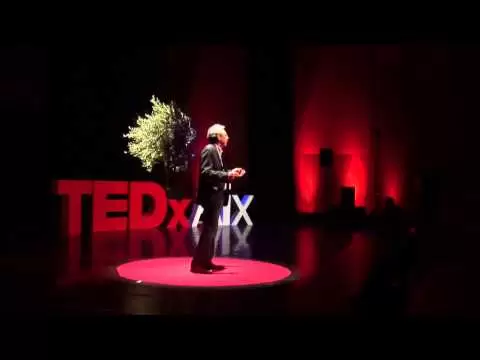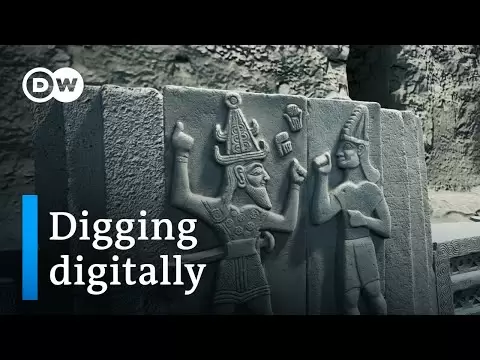YTread - Let's Read YouTube videos as Articles
“People Show Regret One They’ve Been Caught” | BBC’s Huw...
People Show Regret One Theyve Been Caught BBCs Huw Edwards Resigns Adan before we come on to that welcome by the way um youve worked at the BBC you youve...
Read More'Face of the BBC' resigns: Huw Edwards leaves BBC in 'inevitable' and ...
Face of the BBC resigns Huw Edwards leaves BBC in inevitable and momentous move lets start with that breaking news of course its been confirmed that Hugh...
Read MoreBRUTAL FINISH - London Marathon 2024 RACE VLOG (COURSE PB)
BRUTAL FINISH - London Marathon 2024 RACE VLOG COURSE PB well done great work yeah take care rain rain rain what is up guys Andy Forest De Runner here...
Read MoreLONDON MARATHON 2024! INCREDIBLE CROWDS! THAT WAS SOMETHING SPECIAL!
LONDON MARATHON 2024 INCREDIBLE CROWDS THAT WAS SOMETHING SPECIAL yeah we love you we love you 245 pack we ready lets go woo I open my Andy lets go TR ...
Read MoreMiddlesbrough 3-4 Leeds United | The INSTANT Match Reaction
Middlesbrough 3-4 Leeds United The INSTANT Match Reaction for for why give a away why give a fuing stupid no no no back set it off whenever you want e ...
Read MoreCRAZY GAME! | Middlesbrough v Leeds United extended highlights
CRAZY GAME Middlesbrough v Leeds United extended highlights take back cranking up you know its M Night in mid when you hear that the rain falling such a...
Read MoreSpectacular Parade From the St George's Day in London Today ( 20th...
Spectacular Parade From the St Georges Day in London Today 20th April 2024 you left right left right left right left right left right left right he...
Read MoreWhy The English Don't Care About St. George's Day
Why The English Dont Care About St Georges Day I dont even know what it is he killed did he kill a dragon was yeah he killed a dragon its like theyre...
Read MoreCleveland Cavaliers vs Orlando Magic Game 1 Full Highlights | 2024...
Cleveland Cavaliers vs Orlando Magic Game 1 Full Highlights 2024 ECR1 FreeDawkins rocket mortgage Fieldhouse game one the 45 matchup in the East both...
Read MoreCleveland Cavaliers vs Orlando Magic Full Game 2 Highlights | Apr 22 |...
Cleveland Cavaliers vs Orlando Magic Full Game 2 Highlights Apr 22 2024NBAPlayoffs welcome everyone you ready you game Im game from three you got to get...
Read MoreZach Wilson traded to Broncos, Can Drake Maye start right away? | NFL ...
Zach Wilson traded to Broncos Can Drake Maye start right away NFL THE HERD well hes covered the NFL for over two decades SiriusXM host NFL Network...
Read More“Good for Him!” - Rich Eisen: Why Former Jets #2 Overall Pick Zach...
Good for Him - Rich Eisen Why Former Jets 2 Overall Pick Zach Wilson Can Succeed with Broncos on the New York football quarterback draft trade front hit it...
Read MoreAnjunabeats presents Earth Day 2024 | Progressive, Trance
Anjunabeats presents Earth Day 2024 Progressive Trance I walk through fire come breathe on the water the P of ground flows like Riv to my soul the...
Read MorePhiladelphia 76ers vs New York Knicks Full Game 2 Highlights - April...
Philadelphia 76ers vs New York Knicks Full Game 2 Highlights - April 22 2024 2024 NBA Playoffs why spend over 150 when you can buy them for 55 or less at...
Read MoreInside the NBA Reacts to Knicks-76ers Game 2 Ending & Embiid's...
Inside the NBA Reacts to Knicks-76ers Game 2 Ending Embiids Comments finish at the Garden in New York 106 10196 the score Nicks down with 30 seconds to...
Read MoreInside the NBA Reacts To Jamal Murray's Game-Winner To Lift Nuggets...
Inside the NBA Reacts To Jamal Murrays Game-Winner To Lift Nuggets Over Lakers NBA on TNT crazy night on Charles ping to the board in the last secondo...
Read MoreBlippi Learns Trucks at the Fire Station and More | Educational Videos...
Blippi Learns Trucks at the Fire Station and More Educational Videos for Toddlers hey its me honey and today were at the Bellevue Washington fire station...
Read MorePodcast #262 - Playing Incohearent
Podcast 262 Playing Incohearent welcome back to the Julian podcast these marvel cosplaying here ladies and gentlemen we have Kermit on the table today who...
Read MoreEllie Saves James! | Fireman Sam Official | Cartoons for Kids
Ellie Saves James Fireman Sam Official Cartoons for Kids yes james how many actual fires have you put out lots james i bet she hasnt put out as many...
Read MoreThe myth of globalisation | Peter Alfandary | TEDxAix
The myth of globalisation Peter Alfandary TEDxAix I sometimes describe myself as a culturally conflicted Englishman I am first generation born in the UK...
Read MoreArcheology - exploring the past with modern technology | DW History...
Archeology exploring the past with modern technology DW History Documentary the technical technological advancement is rapid so rapid its almost...
Read MoreFrom landscape architecture to conservation agriculture | Thomas Woltz...
From landscape architecture to conservation agriculture Thomas Woltz TEDxCharlottesville the conservation agriculture studio at Nelson Burt waltz...
Read More1000 COMMON ENGLISH QUESTIONS AND ANSWERS for beginners | English...
1000 COMMON ENGLISH QUESTIONS AND ANSWERS for beginners English Conversation me are you American no Im not Im Canadian do you speak English a little but...
Read MorePull Up Wit Ah Stick: The Music Video that Took Down a Neighborhood
Pull Up Wit Ah Stick The Music Video that Took Down a Neighborhood police are trying to find the shooter or shooters involved in the murder of a man in...
Read MoreFinding f(x): Why I teach for the Philippines | Delfin Villafuerte |...
Finding fx Why I teach for the Philippines Delfin Villafuerte TEDxXavierSchool Im gonna try something Ill say class and you will answer with yes but you...
Read MoreMagpakailanman: Revenge body against my body-shaming crush | Full...
Magpakailanman Revenge body against my bodyshaming crush Full Episode Adrian goes to beta the ease of course in the mutual understanding at io that...
Read MoreI Found a MILLIONAIRE Only Server in Minecraft!
I Found a MILLIONAIRE Only Server in Minecraft I have found a millionaire only server in Minecraft look at these millionaires on the server always coming...
Read MoreCathering mcbroom ass - Catherine Paiz | Before and After...
Cathering mcbroom ass Catherine Paiz Before and After Transformations Plastic Surgery Transfor A few of you requested that I do a Beforeand After vid on...
Read MoreDesert Survival, Tame Craft Build | Starsand Gameplay | First Look
Desert Survival Tame Craft Build Starsand Gameplay First Look how is it going this is game edge and thank you so much for joining me this is star sand...
Read MoreFantomWorks Officially ENDED After This Happened... IS FANTOMWORKS...
FantomWorks Officially ENDED After This Happened IS FANTOMWORKS STILL OPEN IN 2021 phantomworks officially ended after this happened i pull into the garage...
Read MoreIELTS LISTENING- ITALIA BREAKS - EBENZ DAY 51"},"lengthSeconds":"2246"...
IELTS LISTENING ITALIA BREAKS EBENZ DAY 51lengthSeconds2246ownerProfileUrlhttpwww section one you will hear a man telephone a travel company to book a...
Read MorePORQUE MARK SLADE ( BLUE ) DEJO LA SERIE EL GRAN CHAPARRAL ????
PORQUE MARK SLADE BLUE DEJO LA SERIE EL GRAN CHAPARRAL hola amigos que tal soy jota y bienvenidos a mi canal hoy veremos porque mrquez ley de abandono...
Read More






























